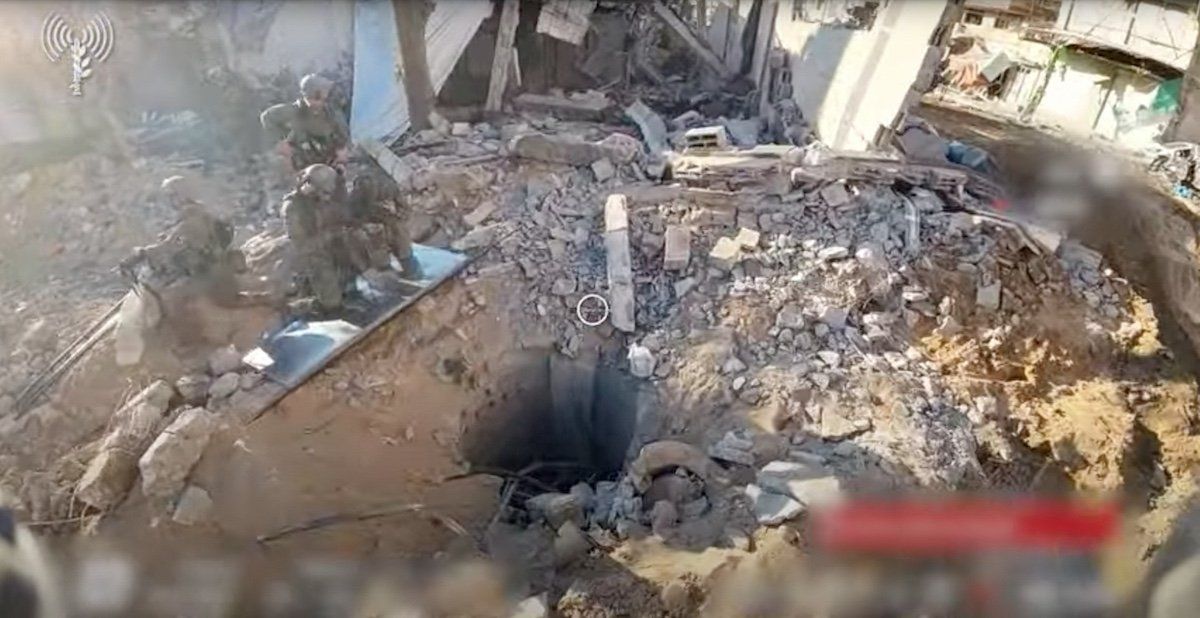It’s been a week since Israeli forces seized control of Al Shifa Hospital, the largest medical facility in the Gaza Strip, prompting the evacuation of hundreds of patients and staff.
The IDF has said the complex sits atop a vast network of tunnels and bunkers – some of them built by Israel when it still occupied Gaza in the 1980s – which Hamas uses as an underground command center. Prior to raiding the hospital, the Israelis released a 3D rendering of what they think is underneath it.
In the days since, the IDF claims to have found evidence of a Hamas presence at the complex: a video that appears to show small arms cached in an MRI center, at least one tunnel, and security camera footage that appears to show at least two of the Oct. 7 hostages being taken into the hospital. None of the footage has been independently verified.
The controversy. The question of what is or is not at Al Shifa has echoed wider clashes over the war. The Israeli government is keen to prove that Hamas has used hospitals and other civilian facilities for significant military purposes. Critics of Israel’s siege and invasion of Gaza, meanwhile, say that forcing patients out of the hospital and seizing it without military justification reflects a broader pattern of IDF disregard for civilian casualties in Gaza.
What do the laws of war say? Combatants can, in fact, attack a school or a hospital, provided there is credible evidence that it is being used to harm the enemy directly, explains Sari Bashi, program director at Human Rights Watch.
But critically, the law also says that any response must be – and this is the grayish zone – “proportionate.” It is not “proportionate,” for example, to destroy a crowded elementary school in order to kill a single sniper positioned on the roof. But depending on how many people the sniper has killed or put in danger, it could be proportionate to target the sniper specifically, even if that meant killing or wounding some students in the process.
For hospitals, Bashi notes, the standards of protection are even higher – after all, even small damage to a hospital can affect the provision of medical services for the wider population.
What’s more, an occupying power immediately has the responsibility to ensure the continued smooth functioning of the hospital. “That’s not what happened,” says Bashi, who points out that even after the IDF took over Al Shifa, there were further evacuations of doctors and patients.
So is the evidence that Israel has shown sufficient? Not yet, says Ilia Utmelidze, director of the Case Matrix Network, a nonprofit that assists governments with war crimes investigations. But he cautions that “these things take time.” Social media is not going to be the place where serious investigative work of this kind gets done.
Still, without a credible international investigation – which the IDF has so far not allowed as it continues to search the complex itself – there may be little evidence of value either way.
One thing to remember. Humanitarian law and the laws of war are imperfect. After all, they are a body of rules developed largely by militaries in the late 1940s to regulate the making of war rather than to prevent conflict altogether. As such, they often permit a wider range of violence and killing than people are comfortable with.
“Unfortunately, humanitarian law is not,” Utmelidze says, “as humane as we would like it to be.”
